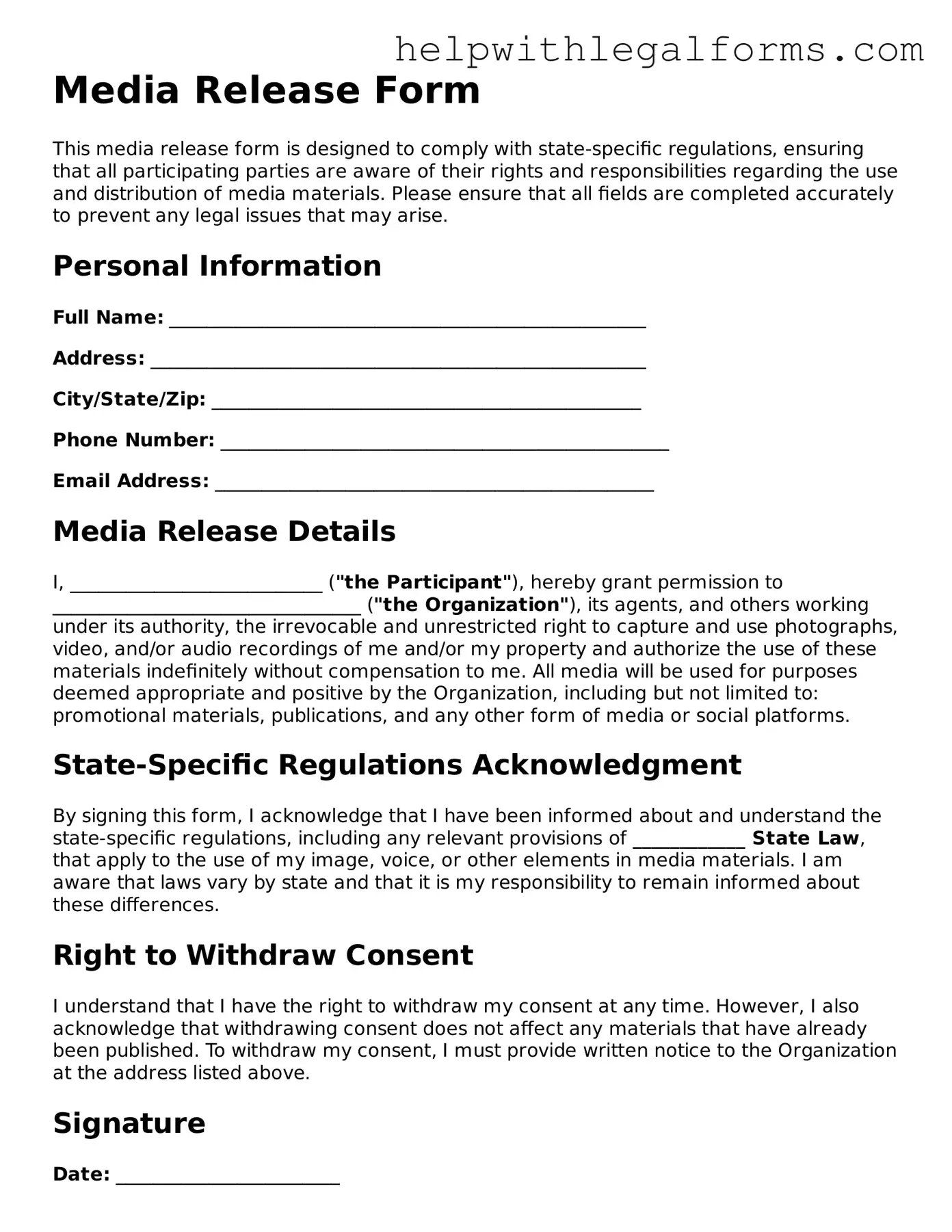Media Release Form
This media release form is designed to comply with state-specific regulations, ensuring that all participating parties are aware of their rights and responsibilities regarding the use and distribution of media materials. Please ensure that all fields are completed accurately to prevent any legal issues that may arise.
Personal Information
Full Name: ___________________________________________________
Address: _____________________________________________________
City/State/Zip: ______________________________________________
Phone Number: ________________________________________________
Email Address: _______________________________________________
Media Release Details
I, ___________________________ ("the Participant"), hereby grant permission to _________________________________ ("the Organization"), its agents, and others working under its authority, the irrevocable and unrestricted right to capture and use photographs, video, and/or audio recordings of me and/or my property and authorize the use of these materials indefinitely without compensation to me. All media will be used for purposes deemed appropriate and positive by the Organization, including but not limited to: promotional materials, publications, and any other form of media or social platforms.
State-Specific Regulations Acknowledgment
By signing this form, I acknowledge that I have been informed about and understand the state-specific regulations, including any relevant provisions of ____________ State Law, that apply to the use of my image, voice, or other elements in media materials. I am aware that laws vary by state and that it is my responsibility to remain informed about these differences.
Right to Withdraw Consent
I understand that I have the right to withdraw my consent at any time. However, I also acknowledge that withdrawing consent does not affect any materials that have already been published. To withdraw my consent, I must provide written notice to the Organization at the address listed above.
Signature
Date: ________________________
Participant's Signature: ________________________________________
Parent/Legal Guardian Signature (if Participant is under 18): ________________________________________
Contact Information
For any inquiries regarding this Media Release Form, please contact the Organization at:
- Address: ________________________________________________
- Phone: _________________________________________________
- Email: __________________________________________________
This form was updated on _____/_____/_____ and supersedes any prior versions. Please ensure that you have the most current version by contacting the Organization directly.
